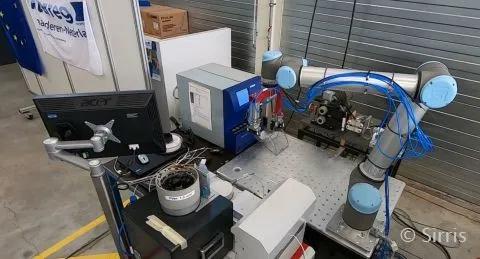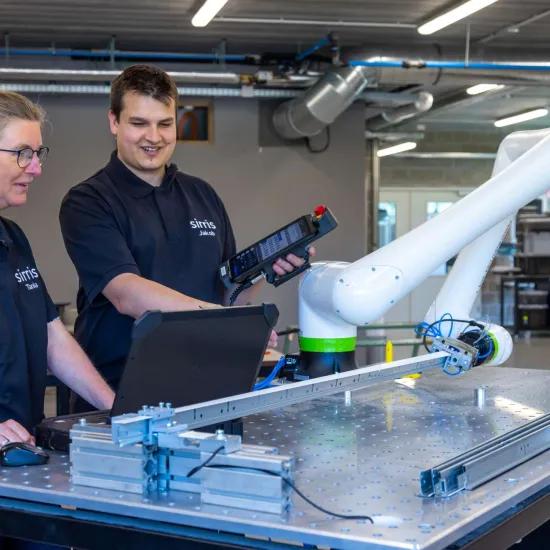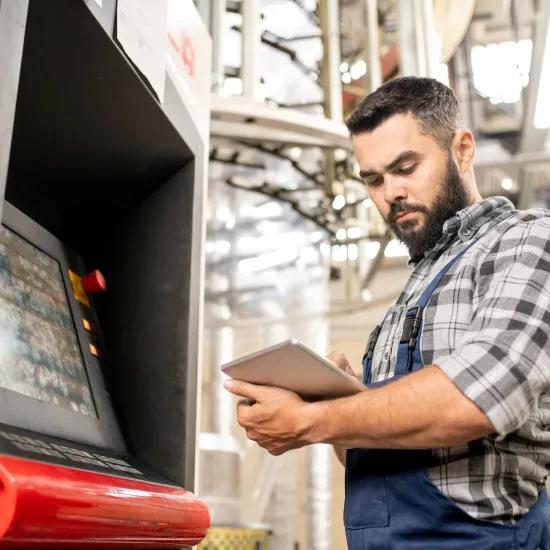Cable confection automation
One of the most time-consuming tasks is cable assembly and their subsequent labelling at both ends. Cable assembly is already automated, but unloading is still performed manually. This is similar to the labelling process: controlled input of the cable and manual unloading. The labelling is automated using an integrated clamping system. Both tasks are labour-intensive and time-consuming.
A fully automated solution requires intelligent handling between the cable-making machine, the transit station and the label applicator. P&V have designed a gripper that can be mounted on a cobot or robot. The functions have already been tested manually. However, robotised manipulation requires a number of other validations. P&V approached Sirris for a feasibility study on the integration of a cobot.
Test setup
The complexity of the operations performed on and between the cable-making machine, label applicator, transit station and robotic gripper made it a tough challenge. The experts designed a test set-up in the Sirris lab in Diepenbeek. The objective was for the robot to remove the cable from the machine and label one end. The robot would then move with the cable to a transfer station where the other end was labelled.
During initial testing, the Sirris experts determined that the cable transfer station had to be adapted to allow for further automation steps: placing a cable at the transit station and transferring the cable from the robot to the transfer station were not yet process-reliable. An additional project was started to search for reliable cable transfer alternatives. This led to the following solution: the transfer station was replaced by two rollers, with the robot now positioning the cable between them. The robot continues to hold the cable in the gripper.
Appropriate solutions were found to other process challenges and changes were proposed to further optimize the process, ensuring an increase in gripper speed, an extension of the robot’s range, and a reduction in cycle completion time, among other factors.




